
Data Speak
A look at District Courts' performance during the pandemic
As with any other public institution, the pandemic posed unprecedented challenges to the Indian judiciary. With multiple lockdowns, for the first time in its history, the courts were brought to a grinding halt. The Supreme Court of India released its first notification addressing the spread of the COVID-19 pandemic and steps to manage its impact on the court on 13th March 2020. The notification stated that only “urgent matters” were to be listed but clarity regarding how the urgency would be decided only came through the notification dated 23rd March 2020. In the meantime, the High Courts across the country followed suit with similar notifications.
While the Supreme Court continued functioning with reduced capacity, many High Courts had to temporarily shut down along with the District Courts under their jurisdiction. It took them some time to determine how to quickly adopt technological solutions to ensure accessibility to the institution. Fortunately, the Courts did not have to start from scratch. Basic technological infrastructure had been built over the last decade due to the eCourts project.
In addition to the adoption of technology, the judiciary of every state adopted different measures to optimally utilise their limited capacity. From prioritising certain kinds of cases like bail applications in order to decongest prisons to reopening courts for physical hearings only to shut them again a few weeks later due to an increase in the number of COVID-19 cases, some measures were more successful than others.
Over the years, during the course of the research of the Justice, Access and Lowering Delays in India (JALDI) Initiative at Vidhi Center for Legal Policy, we have discovered that most of the issues concerning the judiciary in India, including the pendency of disputes, is a district-level problem, more than state or national level. While nationwide figures and data are important, they do not reveal the extent of disparity in accessibility in various parts of the country, as well as the variations in the disruption of judicial function during different phases of the lockdown. As per the data available in the public domain, District Courts overall saw a sharp increase of 13.45% in the pendency of cases between 31 December 2019 and 31 December 2020, highest since 2013.
Methodology
To further understand the extent to which the pandemic affected the Indian judiciary, we undertook a deep-dive into the numbers and kinds of cases that were dealt with by the District Judiciary. The study focuses on District Courts in 2020 and 2021 (pandemic years) as they are often the only point of contact of the Indian population with the judiciary.
The study analyses granular data to provide insights on all District Courts in India during the period of the pandemic and compares it with their respective performance before the pandemic (2018 and 2019) to bring to light the outlier districts that need immediate attention and focus from the decision-makers. As per the data available on the NJDG website, we have scraped data for 642 District Courts. Given the large volume of data, for ease of analysis and presentation, the District Courts have been divided into five zones depending on their geographical location. The zones and the parent High Courts of the District Courts included under each zone are as follows:
| North Zone | North – East Zone | East Zone | South Zone | West Zone |
| Allahabad | Guwahati | Calcutta | Andhra Pradesh | Bombay |
| Delhi | Manipur | Chhattisgarh | Madras | Gujarat |
| Himachal Pradesh | Meghalaya | Jharkhand | Karnataka | Madhya Pradesh |
| Jammu & Kashmir and Ladakh | Sikkim | Patna | Kerala | Rajasthan |
| Punjab & Haryana | Tripura | Orissa | Telengana | |
| Uttarakhand |
Key Findings:
- The case filings saw a decrease of 32% during the pandemic period as the number of cases instituted went from a total of 46447870 in 2018 and 2019 to a total of 31559309 in 2020 and 2021.
- Disposal of cases saw a decrease of 42.33% during the pandemic period as the number of cases disposed went from a total of 38896865 in 2018 and 2019 to a total of 22428561 in 2020 and 2021.
- Amongst the criminal cases disposed during the pandemic period, bail applications were prioritised across all zones. The overall disposal rate across District Courts suffered and hence, only District Courts in a few states like Uttarakhand, Madhya Pradesh, Rajasthan, Chhattisgarh and Odisha were able to significantly increase the disposal of actual numbers of bail applications as compared to the two years prior to the pandemic.
- Execution Petitions are filed by the decree-holder as a plea before the court to execute its judgement and hence, a delay in their disposal results in a travesty of justice. Despite this, an overall reduced disposal rate resulted in a significant reduction in the disposal of execution petitions during the pandemic years across all zones.
Some key highlights from the zonal reports are as follows:
North Zone:
- In the North Zone, the District Courts in Jammu & Kashmir and Ladakh increased the number of cases instituted both in 2020 and in 2021 by a total of 13.04% compared to the previous two years. Even with respect to the disposal rate, there was just an overall 3% decrease during the pandemic years, which is much lesser than all the District Courts of other states studied in the North Zone report.
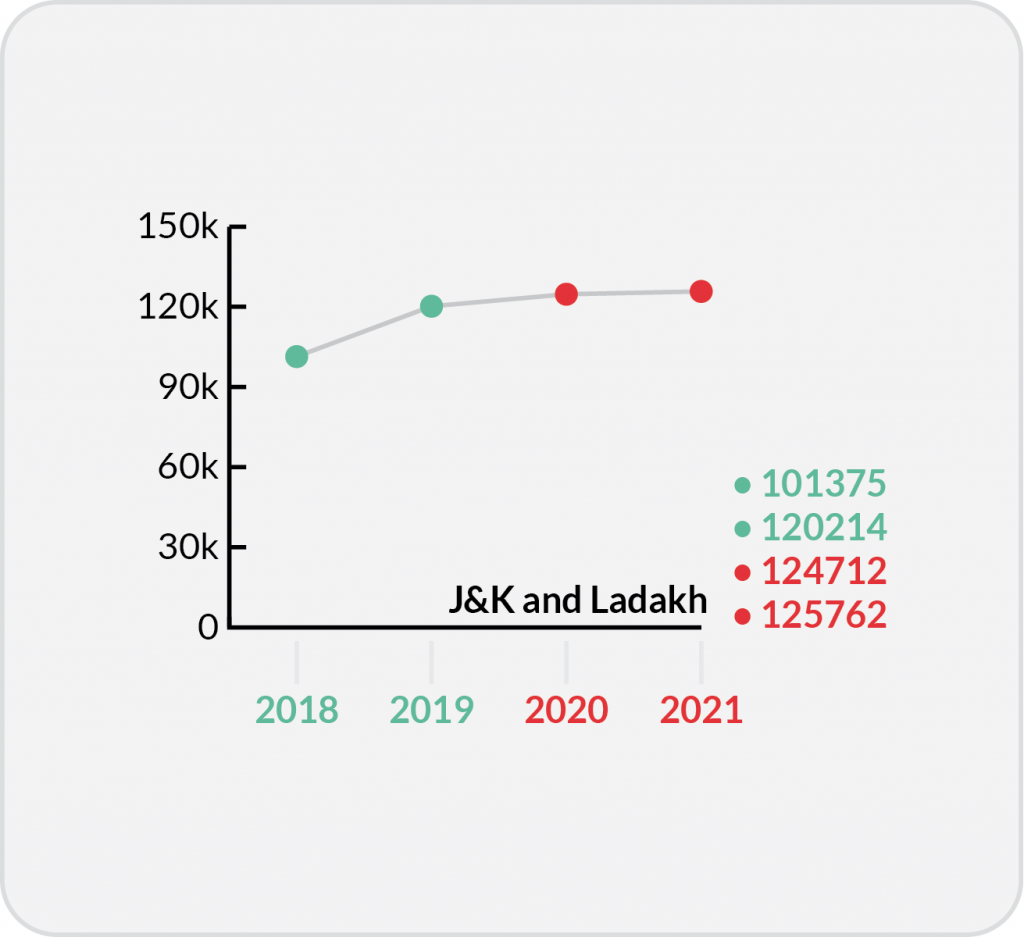
North-East Zone:
- Across the North-East Zone, District Courts saw a decline in the number of case filings in 2020. However, District Courts under all High Courts recovered the case filing numbers in 2021 except the High Court of Manipur. The District Courts under the High Court of Meghalaya and Tripura on an average improved case institution to overtake the pre-pandemic numbers.
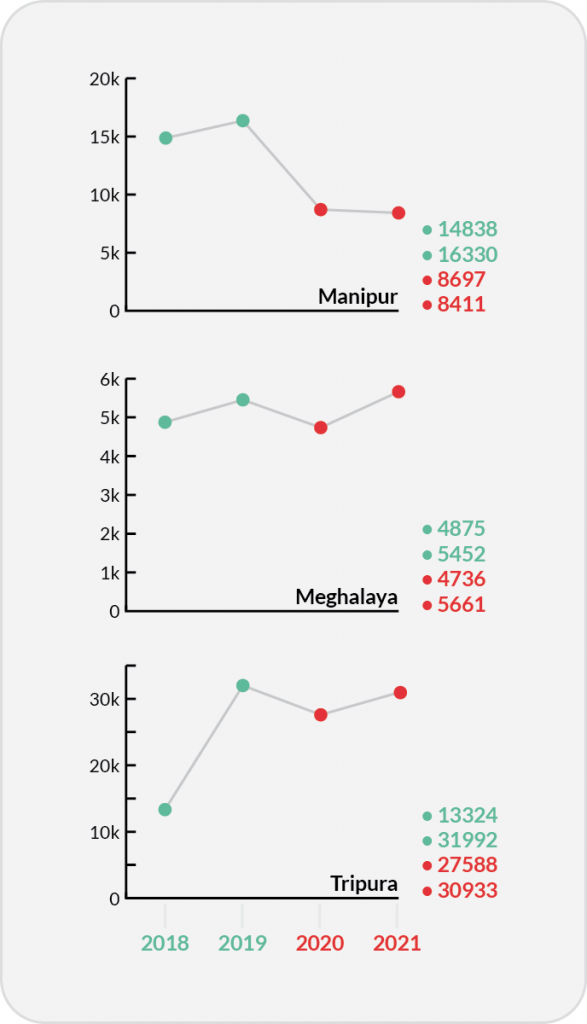
East Zone:
- Across the East Zone, District Courts saw a significant decline in the number of case filings throughout the pandemic years. Only the District Courts under the High Court of Chhattisgarh were able to significantly improve case filings in 2021 while the others continued to struggle. The District Courts under the High Court of Judicature at Patna saw a downward trend with respect to case institutions in 2021 as well.
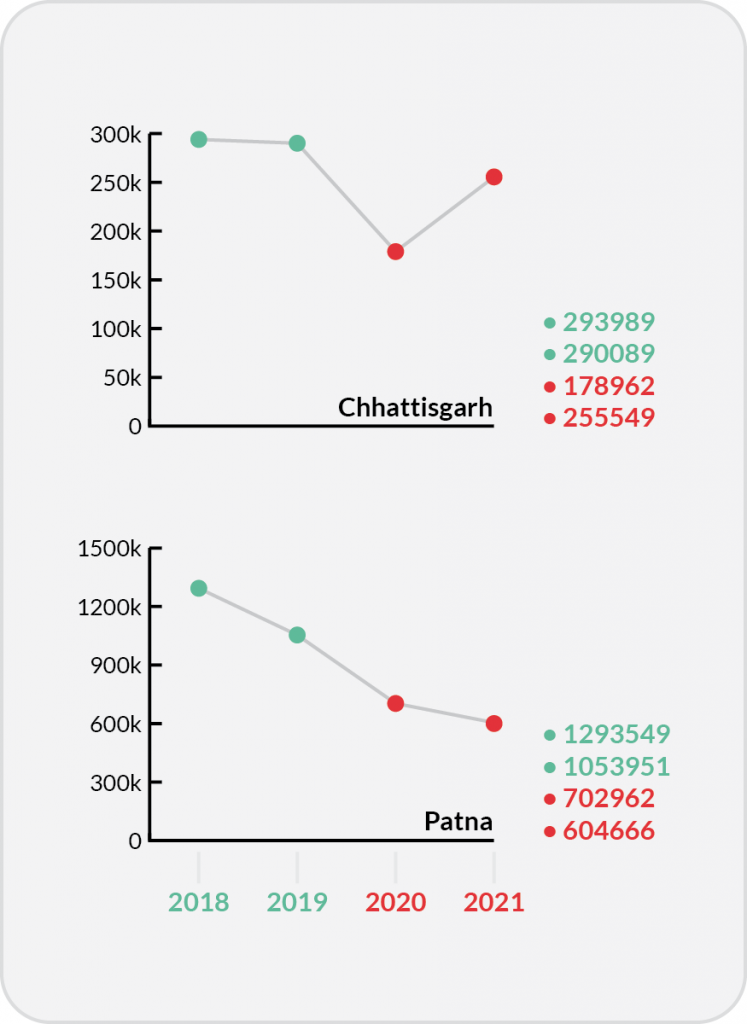
South Zone:
- Across the South Zone, District Courts saw a decline in the number of case filings in 2020. However, District Courts under all High Courts recovered the case filing numbers in 2021 except the High Court of Kerala, which continued to see a decline (34.84%). These District Courts also suffered the most decline in the disposal of cases.
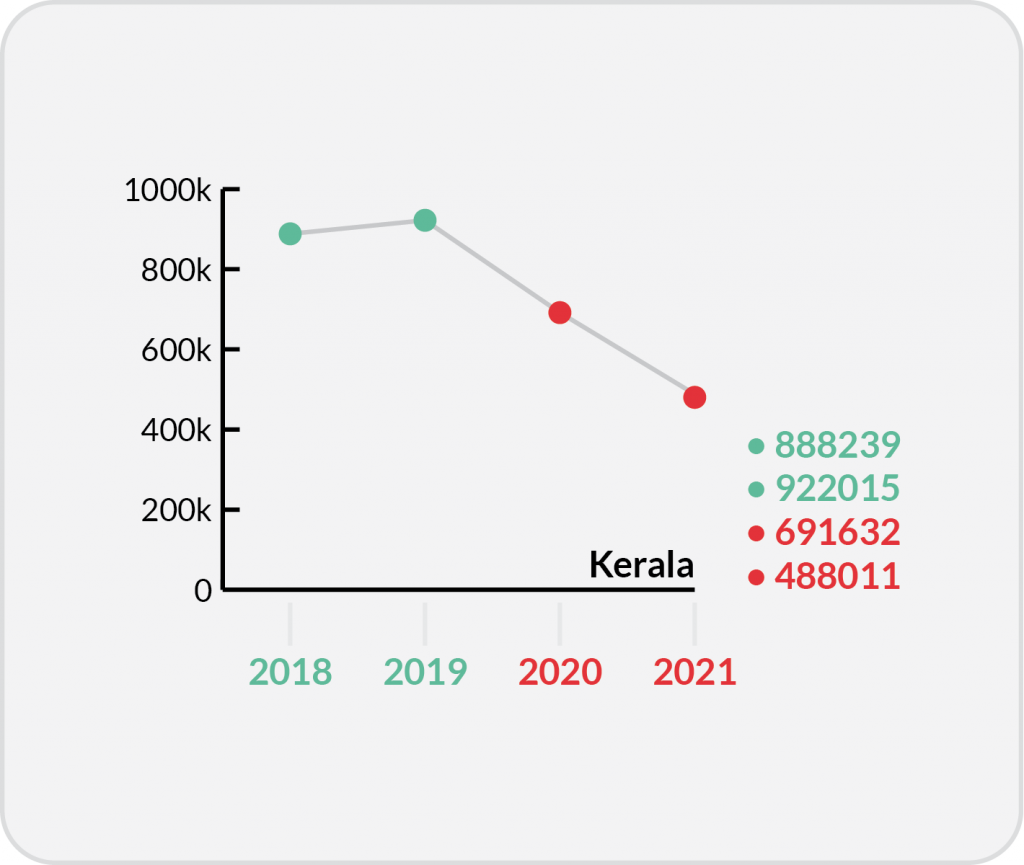
West Zone:
- Across the West Zone, all District Courts saw a decline in the number of case filings in 2020. However, District Courts under all High Courts recovered the case filing numbers in 2021 except the High Court of Judicature at Bombay, which continued to see a decline. In 2021, the District Courts under the High Court of Gujarat improved the case institution numbers to the extent that on average, the pandemic years saw more case institutions than the pre-pandemic years.
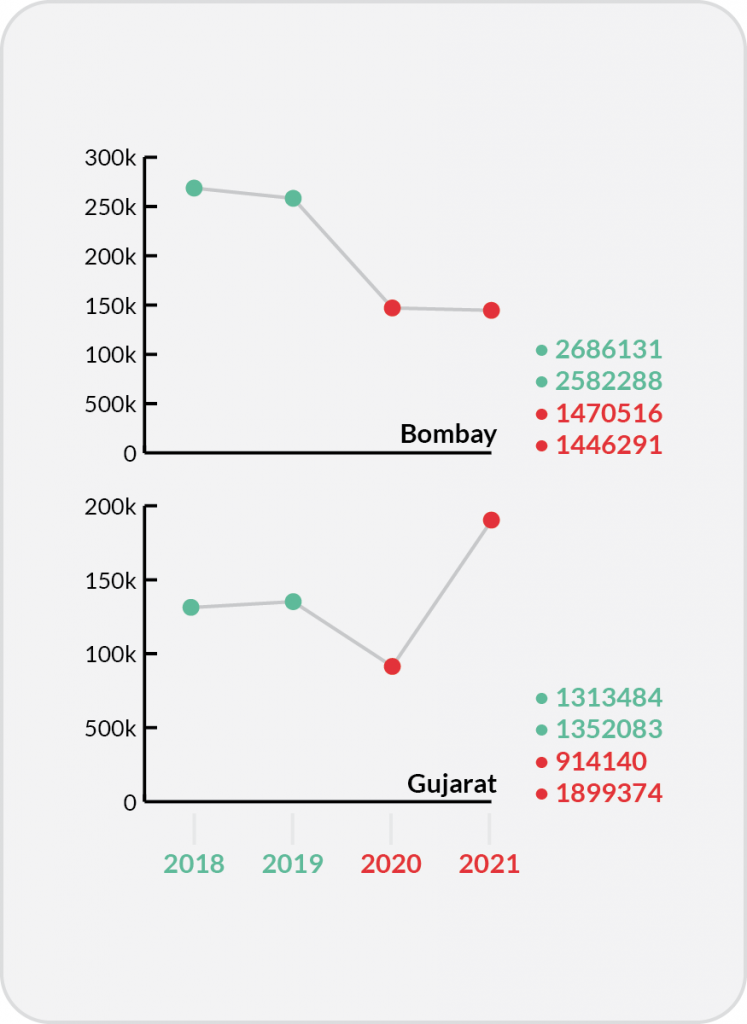
There is a need for studying the reasons behind the District Courts under the most well-established and historically significant High Courts at Delhi, Bombay, Madras, Calcutta and Gauhati have performed most poorly in their zones with respect to both case institutions and disposals during the pandemic.
Suggestions for a more resilient judiciary
While the COVID-19 pandemic was an unprecedented event, the judicial system must learn from it and should incorporate measures to prepare for natural, medical, and human-induced disasters in the future. It should adopt a robust disaster mitigation system to address disruption in the physical hearing, destruction of court records or facilities caused by disasters, and disrupting events such as cyclones, floods, earthquakes, epidemics, and pandemics.
To this end, the courts should focus on the following measures.
- Creating a disaster-resilient judicial infrastructure
Infrastructure of the Court should be disaster-proof so that physical records of cases are not lost due to any disaster. This would require adopting secure technology for information storage.
- Increasing the flexibility of court proceedings
There is a need to adopt a robust virtual Courts system that is accessible to all, pan-India and able to handle the workload of the courts around the country without limiting the capacity of courts.
- Enabling a participatory approach towards disaster management
Best practices from within the Court, as well as other jurisdictions, need to be looked into. Feedback from stakeholders like litigants and lawyers should be regularly taken into account.
In addition, considering the nature of disasters and their unpredictability, every disaster will pose a unique set of challenges. In such situations, the judicial leadership should work alongside disaster management experts to undertake the required initiative to address these challenges. It is also essential that in order to eliminate pervasive problems that have been aggravated due to pandemic-induced restrictions, localised interventions at the lowest level are necessary.



